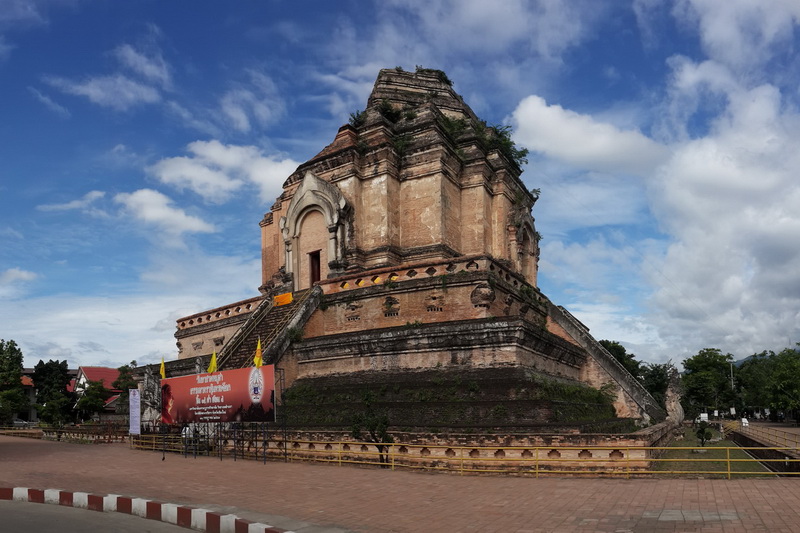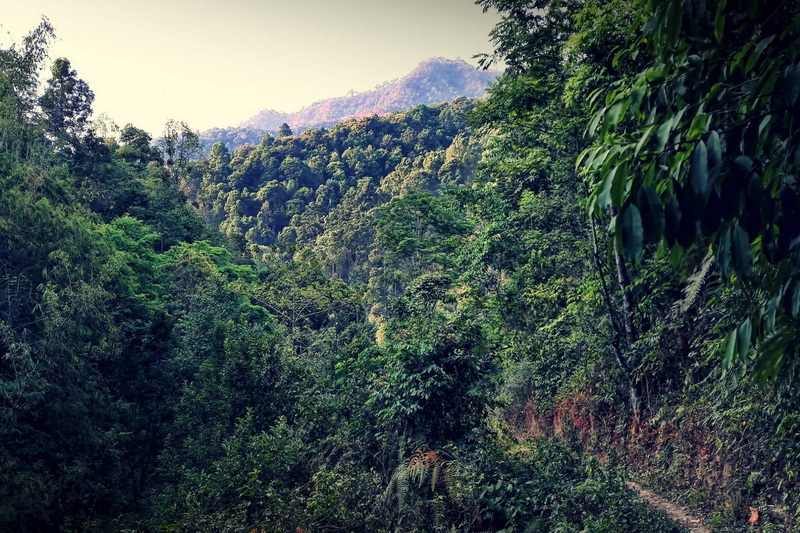Wat Phan Tao ‘Admire the most beautiful Ho Luang Thong Kham Vihara’

Explore the extraordinary golden teak Phan Tao Temple, a building not born as a monastery, but a relic of royal Lanna power and exquisite 19th-century craftsmanship.
☀️A Hidden Lanna Treasure in the Heart of Chiang Mai
Each temple in Chiang Mai has its own distinctive vihara (assembly hall), but few compare to the grace and grandeur of Wat Phan Tao. Tucked quietly in the Old City, this teakwood sanctuary captivates visitors with its royal history, exquisite carvings, and serene atmosphere. If you want to see one of the most beautiful, glorious, and stunning viharas in all of Chiang Mai, Wat Phan Tao should be at the very top of your list.
🕰 The Origin of the Name “Phan Tao”
The temple’s name carries a story that stretches back through centuries. In Thai, “Tao” means “stove” and “Pan” means “thousands.” You might wonder—were there thousands of stoves here?
In fact, the area where Wat Phan Tao now stands once hosted numerous kilns used for molding sacred images of Phra Atta Rassa. This history gave birth to the name “Wat Phan Tao”, literally “Temple of a Thousand Stoves,” symbolizing its ancient role in spiritual craftsmanship.


🛕 A Temple with Royal Foundations
Located on King Prajadhipok Road within the square moat of Chiang Mai’s Old City, Phan Tao Temple is one of the city’s oldest and most historically significant temples. Visitors entering the temple grounds encounter a small pavilion on the left-hand side with signage introducing key highlights such as Phra Chao Phan Tao (the main Buddha image) and the Sarira (sacred relics).
The temple’s crown jewel is its magnificent vihara, but this wasn’t always a temple building. Originally constructed in 1846 as a Ho Kham (royal throne hall) for Chao Mahotaraprathet, the fifth ruler of Chiang Mai, it served as a palace hall for years. When a new king ascended the throne and a new palace was built, the wooden panels of the old structure were preserved and repurposed to create the vihara we see today—completed in 1876. This makes Wat Phan Tao a living example of Chiang Mai’s adaptive reuse of royal architecture for spiritual purposes.
🌟 The Most Beautiful Vihara in the Province
The Ho Kham Luang Vihara of Wat Phan Tao is regarded as the most beautiful wooden vihara in Chiang Mai. Built entirely of golden teakwood, its architecture reflects authentic Lanna style with remarkable craftsmanship.
The entrance door is especially striking—adorned with a carved peacock motif inlaid with glass. This is not just decoration; the peacock symbolizes grace, prosperity, and royalty in Lanna culture. Inside, the hall’s 28 massive teak pillars rise toward the high roof, framing the sacred statue of Phra Chao Phan Tao, a stunning Lanna-style Buddha image seated in serene meditation.
Visitors are welcome to pay their respects here at any time. However, modest dress is essential. Shorts, sleeveless tops, or revealing clothing are discouraged. Women in shorts or non-sleeved shirts should cover themselves with a scarf, jacket, or sarong provided on-site before entering the vihara.


🏯 Beyond the Vihara – Chedis and Sacred Spaces
Behind the vihara stands Chedi Phratan, a bell-shaped stupa on an octagonal base surrounded by smaller chedis—a classic feature of northern Thai temple design. These chedis symbolize the radiating light of the Buddha’s teachings and offer a tranquil backdrop for meditation and reflection.
Around the temple grounds, visitors can find additional Buddha statues and small shrines, including one by the pond that reflects the wooden vihara beautifully at sunset. While it may appear quiet compared to Chiang Mai’s busier temples, this is part of its charm—a serene environment ideal for families, students of history, and travelers seeking a moment of peace.
🪔 Candlelit Ceremonies and Festivals
On major Buddhist holidays such as Visakha Bucha, Makha Bucha, and Loy Krathong, Wat Phan Tao becomes a luminous sanctuary. Hundreds of terracotta lanterns (phang prateep) are lit around the pond and pathways, creating a magical scene of flickering light. Monks and locals gather for evening rituals, chanting and walking in candlelight processions.
For visitors, these nights are unforgettable—an opportunity to witness living Lanna traditions against the backdrop of one of Chiang Mai’s most historic temples. Photographers especially prize these events for their breathtaking visuals.


🗓 Visiting Tips and Dress Code
- Hours: Open daily from 6:00 a.m. to 6:00 p.m.
- Dress Modestly: Shoulders and knees covered; sarongs available for loan.
- Best Time to Visit: Late afternoon for golden light on the teakwood, or during festivals for candlelit ceremonies.
- Atmosphere: Quiet, respectful, and family-friendly.
🗺 How to Get There
To find Wat Phan Tao, start with a map of downtown Chiang Mai. The Old City’s moat is square-shaped, and the temple sits near its center on King Prajadhipok Road, just off Ratchadamnoen Road and directly adjacent to Wat Chedi Luang. It’s only a 10-minute walk from Tha Phae Gate or a short ride by red songthaew (shared taxi). Bicycles are another great option to explore this area’s Chiang Mai tourist attractions.
Nearby Places
Wat Chedi Luang stays so close to Wat Pan Tao. In fact, the entrance of Wat Pan Tao is located just several metres from Wat Chedi Luang’s gate. You may take a tour around both temples. In Wat Chedi Luang, the highlight is the Chedi. In Wat Pan Tao, the highlight is the wooden vihara. They all are valuable historic architects of Thailand, deserving reservation.
Wat Phra Singh is situated on the western end of the old city, nestled inside a moat that was originally established in the year 1345. The main attraction of Wat Phra Singh is Wihan Lai Kham, a complex which reiterates the history of Songthong and Suwanna Hongse. As for its grand architecture, visitors will be amazed by the majestic Lions that guard the main entrance of the temple overlooking the Ping River.










Leave A Comment